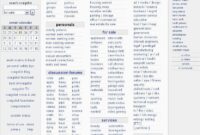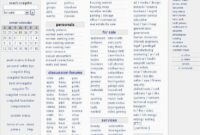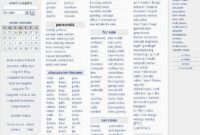Used Chevy 2500 Work Trucks For Sale: Your Comprehensive Buying Guide pickup.truckstrend.com
In the demanding world of trades, construction, agriculture, and heavy hauling, a reliable work truck isn’t just a convenience—it’s an indispensable tool. Among the titans of the heavy-duty truck segment, the Chevrolet Silverado 2500 HD (Heavy Duty) stands out as a perennial favorite, renowned for its robust capabilities, powerful engine options, and enduring durability. While a brand-new 2500 HD offers cutting-edge features, the smart money often points to the thriving market of Used Chevy 2500 Work Trucks For Sale. This comprehensive guide will navigate the landscape of pre-owned 2500s, helping you make an informed decision that perfectly balances performance, value, and your specific work requirements.
A used Chevy 2500 isn’t merely a depreciated asset; it’s a proven workhorse that has already absorbed the initial depreciation hit, offering substantial cost savings without compromising on the heavy-duty performance you need. These trucks are engineered to tackle challenging tasks, from towing massive trailers and hauling heavy payloads to navigating rough job sites and enduring long hours of operation. Opting for a used model means accessing this formidable capability at a fraction of the new price, making it an exceptionally appealing choice for small businesses, contractors, farmers, and anyone who demands serious truck performance on a budget.
Used Chevy 2500 Work Trucks For Sale: Your Comprehensive Buying Guide
Why Choose a Used Chevy 2500 for Your Work Needs?
The decision to purchase a used Chevy 2500 HD for your business or personal heavy-duty tasks is often driven by a compelling combination of practical benefits:
- Significant Cost Savings: The most obvious advantage is the lower purchase price compared to a new model. New vehicles depreciate rapidly in their first few years, and buying used allows you to avoid this steep initial loss, making your investment go further.
- Proven Reliability and Durability: Chevy 2500s are built to last. Their heavy-duty components, robust frames, and powerful powertrains are designed for continuous strenuous work. Many used models have years of reliable service left, especially if they’ve been well-maintained.
- Strong Towing and Hauling Capabilities: Whether powered by a gasoline V8 or the legendary Duramax diesel, the 2500 HD offers impressive towing capacities, often exceeding 18,000 pounds when properly equipped, and substantial payload ratings. This makes them ideal for fifth-wheel trailers, large equipment, and heavy materials.
- Availability of Various Configurations: The used market is rich with diverse Chevy 2500 configurations. You can find regular cab, extended cab, and crew cab options, along with standard or long beds, and both 2WD and 4WD drivetrains. This variety allows you to select a truck perfectly tailored to your specific operational needs.
- Lower Insurance and Registration Costs: Older vehicles often come with lower insurance premiums and sometimes reduced registration fees compared to their brand-new counterparts, contributing to lower overall ownership costs.
- Established Aftermarket Support: Given the popularity of the Chevy 2500, there’s a vast aftermarket for parts, accessories, and customization options, making maintenance and upgrades straightforward and often more affordable.

Key Generations and What to Look For

The Chevy 2500 HD has evolved significantly over the years, with distinct generations offering different features and characteristics. Understanding these can help narrow your search:
- GMT800 (1999-2007 Classic): These trucks are known for their rugged simplicity and powerful engine options like the 6.0L Vortec gasoline V8 and the early 6.6L Duramax LB7, LLY, and LBZ diesel engines. They are often more affordable and can be excellent work trucks if well-maintained. Look for rust on the frame and body.
- GMT900 (2007.5-2014): Featuring updated styling, improved interiors, and enhanced safety features, these models continued with the 6.0L Vortec and LML Duramax diesel. They offer a more refined ride and better amenities while retaining strong work capabilities. Common issues can include electrical gremlins or rust around rocker panels.
- K2XX (2015-2019): This generation brought a more modern exterior design, quieter cabins, and further improvements in towing and technology. The 6.0L gas and LML/L5P Duramax diesels were the primary powertrains. These are highly sought after for their balance of modern features and proven reliability. Check for potential issues with DEF systems on diesels.
- T1XX (2020-Present): The latest generation offers the most advanced features, massive grilles, new engine options (like the 6.6L L8T gasoline V8), and even higher towing capacities. While newer, some early models are starting to appear on the used market.

Engine Options:
- Gasoline: The 6.0L Vortec V8 has been a stalwart for decades, known for its reliability and ample power. Newer models feature the 6.6L L8T V8.
- Diesel: The 6.6L Duramax V8, paired with the Allison transmission, is the gold standard for heavy towing. Different iterations (LB7, LLY, LBZ, LMM, LML, L5P) offer varying power levels and emissions systems.
Transmission Options: Most 2500 HDs are equipped with robust automatic transmissions, notably the Allison 1000 series (paired with the Duramax) or various General Motors Hydra-Matic transmissions for gasoline engines. The Allison is legendary for its durability under heavy loads.
What to Inspect Before Buying a Used Chevy 2500 Work Truck
A thorough inspection is paramount when buying a used work truck. Don’t rush this process.
- Exterior and Frame: Look for rust, especially on the frame, rocker panels, wheel wells, and bed. Rust can compromise structural integrity. Check for signs of previous accidents (misaligned panels, inconsistent paint, frame damage).
- Undercarriage: Inspect the suspension components (shocks, springs, control arms), steering linkage, exhaust system, and differentials for leaks, rust, or damage.
- Tires and Brakes: Check tire tread depth and evenness (uneven wear can indicate alignment issues). Inspect brake pads and rotors for wear.
- Engine Bay: Look for fluid leaks (oil, coolant, power steering, transmission), frayed belts, cracked hoses, and corrosion on battery terminals. Check the color and level of all fluids. Listen for unusual noises during startup and idling.
- Interior: Test all electronics (windows, locks, radio, HVAC, lights, dashboard gauges). Check the condition of seats, carpets, and headliner. Look for water stains or musty odors, which could indicate leaks.
- Test Drive: This is crucial.
- Engine: Listen for strange noises, check for excessive smoke (especially diesel), ensure smooth acceleration, and no hesitation.
- Transmission: Shifts should be smooth and timely, with no slipping or harsh jerks. Test all gears, including reverse.
- Brakes: Should be firm and stop the truck smoothly without pulling to one side or pulsating.
- Steering: Should feel tight and responsive, with no excessive play.
- Suspension: Drive over bumps to check for excessive bouncing or loud clunking.
- 4×4 System: If equipped, test engagement of 4-High and 4-Low.
- Service Records and Vehicle History Report: Ask for maintenance records. A clean title and a comprehensive vehicle history report (CarFax, AutoCheck) are essential to verify mileage, accident history, and service history.
- Pre-Purchase Inspection (PPI): Strongly recommended. Have a trusted independent mechanic perform a thorough inspection, even if the truck looks good. They can identify hidden issues you might miss.
Understanding Powertrain Options: Gasoline vs. Diesel
The choice between a gasoline or diesel engine is one of the most critical decisions when buying a used 2500 HD.
-
Gasoline Engine (e.g., 6.0L Vortec, 6.6L L8T):
- Pros: Lower upfront purchase cost, simpler and generally less expensive maintenance, quicker warm-up times, often better for short trips and frequent starts/stops, less complex emissions systems.
- Cons: Lower fuel economy, less torque for very heavy towing, engine life typically shorter than a well-maintained diesel.
- Best For: Moderate towing/hauling, mixed city/highway driving, those on a tighter budget, or if you don’t consistently tow at the upper limits.
-
Diesel Engine (e.g., 6.6L Duramax):
- Pros: Superior towing torque and power, better fuel economy (especially when towing heavy loads), longer engine life (often 300,000+ miles with proper care), excellent engine braking.
- Cons: Higher upfront cost, more expensive and complex maintenance (fuel filters, DEF system, turbo, injectors), slower warm-up in cold weather, diesel particulate filter (DPF) and diesel exhaust fluid (DEF) systems can be costly to repair if they fail.
- Best For: Consistent heavy towing, long-haul operations, those who prioritize maximum power and longevity, or when fuel economy under load is a primary concern.
Your specific work requirements should dictate this choice. If you tow 15,000 pounds every day, a Duramax is likely the better long-term investment. If you occasionally haul building materials and primarily use the truck unladen, a gasoline V8 might be more cost-effective.
Navigating the Purchase Process
Finding and buying the right used Chevy 2500 involves several steps:
- Where to Look:
- New Car Dealerships: Often have certified pre-owned (CPO) options or trade-ins, which may come with warranties but higher prices.
- Used Car Dealerships: Wide selection, but research their reputation.
- Private Sellers: Potentially lower prices, but more due diligence required. Use reputable online marketplaces.
- Online Marketplaces: Autotrader, Cars.com, Facebook Marketplace, Craigslist. Be cautious of scams.
- Auction Sites/Fleet Sales: Can offer great deals but often "as-is" and require expertise.
- Setting a Realistic Budget: Beyond the purchase price, factor in sales tax, registration fees, insurance, immediate repairs/maintenance (e.g., new tires, fluid changes), and ongoing fuel costs.
- Financing Options: Explore options with your bank or credit union before visiting a seller. Dealerships also offer financing, but compare rates.
- Negotiation Tips: Research the fair market value using sites like Kelley Blue Book (KBB) or Edmunds. Be prepared to walk away if the price isn’t right or if significant issues are found. Highlight any flaws you discover during inspection to justify a lower offer.
- Paperwork: Ensure the seller has the clean title in hand. Get a detailed bill of sale. Verify the VIN on all documents matches the truck.
Maintaining Your Used Chevy 2500 Work Truck
Once you’ve purchased your used 2500, proactive maintenance is key to maximizing its lifespan and performance.
- Follow Manufacturer’s Schedule: Adhere to the recommended maintenance intervals for oil changes, fluid flushes (transmission, differential, transfer case, coolant, brake fluid), and filter replacements (air, fuel, cabin). Diesel engines, in particular, have specific fuel filter replacement schedules.
- Regular Inspections: Periodically check tire pressure and tread, inspect belts and hoses for wear, and look for any new fluid leaks.
- Brakes and Suspension: Have these components checked regularly, especially if you frequently tow or haul heavy loads.
- Address Issues Promptly: Don’t ignore warning lights or unusual noises. Addressing small problems early can prevent costly major repairs down the line.
- Diesel-Specific Care: Pay extra attention to the diesel exhaust fluid (DEF) system (if applicable), ensure DPF regenerations complete, and use high-quality diesel fuel.
Used Chevy 2500 Work Trucks For Sale: Estimated Price Range Table
Prices for used Chevy 2500 work trucks vary dramatically based on year, mileage, condition, engine type, trim level, and geographic location. The table below provides a general estimated range to help you set expectations. These are not definitive prices but rather typical market values.
| Model Year Range | Engine Type | Mileage Range (Miles) | Condition (General) | Estimated Price Range (USD) | Key Considerations |
|---|---|---|---|---|---|
| 2000-2007 | Gas (6.0L) | 150,000 – 250,000+ | Fair – Good | $5,000 – $12,000 | Older generation, potential for significant rust, basic features. Great for budget. |
| Diesel (6.6L) | 200,000 – 350,000+ | Fair – Good | $8,000 – $18,000 | High mileage common for diesels, check injector/turbo history. | |
| 2008-2014 | Gas (6.0L) | 100,000 – 200,000 | Good – Very Good | $12,000 – $22,000 | Improved interiors, more tech. Check for transmission issues. |
| Diesel (6.6L) | 150,000 – 250,000+ | Good – Very Good | $18,000 – $30,000 | Still strong performers, check LML emissions systems (if applicable). | |
| 2015-2019 | Gas (6.0L) | 60,000 – 150,000 | Very Good – Excellent | $20,000 – $35,000 | Modern styling, quieter cabin. Solid all-around work truck. |
| Diesel (6.6L) | 80,000 – 180,000 | Very Good – Excellent | $30,000 – $45,000+ | Highly sought after, LML/L5P Duramax. Check for DEF/DPF system health. | |
| 2020-Present | Gas (6.6L) | 20,000 – 80,000 | Excellent – Like New | $35,000 – $55,000+ | Newer, higher tech, may still have factory warranty. |
| Diesel (6.6L) | 30,000 – 100,000 | Excellent – Like New | $45,000 – $65,000+ | Latest generation, most expensive used options. |
Note: Prices can fluctuate based on trim level (WT, LT, LTZ, High Country), 2WD vs. 4WD, cab configuration, bed length, local market demand, and the overall mechanical/cosmetic condition of the specific vehicle.
Frequently Asked Questions (FAQ)
Q1: How many miles is too many for a used Chevy 2500?
A1: For a gasoline engine, 150,000-200,000 miles is often considered high, but a well-maintained truck can easily exceed this. For a Duramax diesel, 250,000-350,000 miles is not uncommon, and many go much further with proper care. It’s more about maintenance history and condition than just mileage.
Q2: Is a diesel or gasoline 2500 better for towing?
A2: For consistently heavy towing (e.g., over 10,000 lbs), a diesel engine (Duramax) is generally superior due to its higher torque, better fuel economy under load, and often longer lifespan. Gasoline engines are perfectly capable for moderate towing and general work.
Q3: What are the most common issues with used Chevy 2500s?
A3: Common issues can vary by generation. Older models may suffer from rust, worn suspension components, or electrical issues. Duramax diesels can have issues with injectors (older models), DPF/DEF systems (newer models), or turbochargers. Gasoline engines are generally very reliable but can have intake manifold gasket issues or minor electrical quirks. Always get a pre-purchase inspection.
Q4: Should I get a CarFax or AutoCheck report?
A4: Absolutely. A vehicle history report is crucial. It can reveal accident history, previous owners, service records (if reported), title issues (salvage, flood), and verify mileage.
Q5: Can I use a used 2500 for personal use as well?
A5: Yes, many people use 2500s as dual-purpose vehicles for work and personal use. Crew cab models offer comfortable seating for families, and while they are heavy-duty, they can be surprisingly comfortable for daily driving, albeit with lower fuel economy than smaller vehicles.
Q6: What’s the difference between 1500, 2500, and 3500?
A6: These numbers generally refer to the truck’s payload and towing capacity.
- 1500 (Half-Ton): Light-duty, ideal for general use, light towing/hauling.
- 2500 (Three-Quarter Ton): Heavy-duty, designed for significant towing and hauling, often used by contractors.
- 3500 (One-Ton): Super heavy-duty, highest capacities, often configured with dual rear wheels (dually) for maximum stability and towing.
Conclusion
The market for Used Chevy 2500 Work Trucks For Sale offers an exceptional opportunity to acquire a formidable, reliable, and cost-effective workhorse. By understanding the different generations, diligently inspecting potential purchases, weighing the pros and cons of gasoline versus diesel, and navigating the buying process with care, you can secure a vehicle that will faithfully serve your demanding work requirements for years to come. A well-chosen used Chevy 2500 isn’t just a truck; it’s a strategic investment in your productivity and peace of mind, proving that you don’t always need to buy new to get robust, dependable performance.



